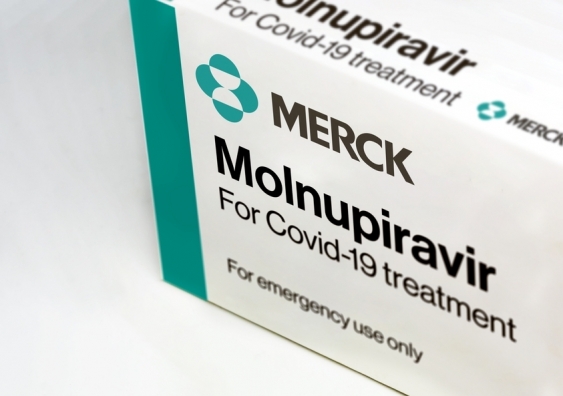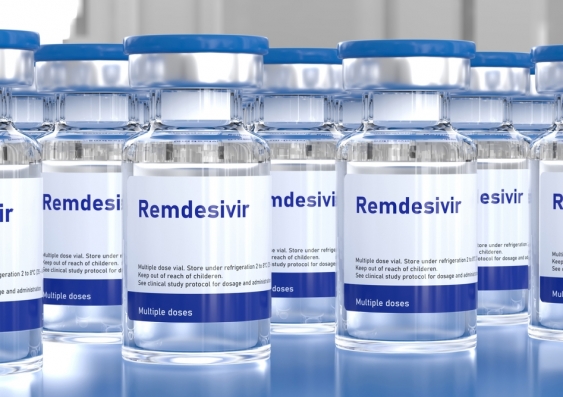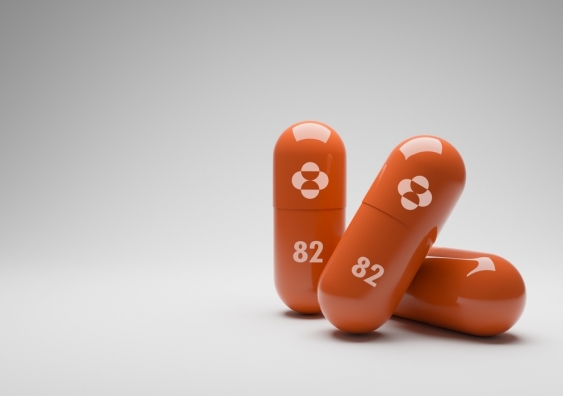COVID-19 treatments - what are they and how do they work?
While COVID-19 treatments are not a substitute for vaccinations, they can act as an additional layer in the fight against SARS-CoV-2.
While COVID-19 treatments are not a substitute for vaccinations, they can act as an additional layer in the fight against SARS-CoV-2.

The speed at which vaccinations have been developed since the start of the pandemic has been nothing short of amazing. During the same period, the development of COVID-19 therapeutics has been ongoing.
Infectious diseases physician, Professor Gail Matthews at the Kirby Institute, UNSW Sydney said the quest to find highly effective treatments for COVID-19 has unfortunately been slower than that for vaccine development and has been complicated by the natural history of SARS-CoV2 infection.
“The typical phases of COVID-19 illness likely require different types of therapeutic intervention at different times. Large scale pragmatic adaptive studies such as RECOVERY and RE-MAP CAP enrolling tens of thousands of patients worldwide have provided important data to guide treatment choice whilst the pharmaceutical industries continue to explore and develop novel agents,” said Prof. Matthews.
While vaccination is the preferred and primary option to prevent COVID-19, Prof. Matthews said the best data for treatment benefit for hospitalised patients remains the simple and cheap option of steroids such as dexamethasone. Dexamethasone is an affordable, anti-inflammatory treatment that has shown to be crucial in improving positive outcomes in COVID-19 pneumonia and respiratory failure.
“However, a number of newer agents are starting to come through the pipeline, some of which are entering clinical use.”
There are currently two specific COVID-19 treatments provisionally approved by the Therapeutic Good Administration (TGA) in Australia – remdesivir and sotrovimab. Two further treatments, Molnupiravir and Pfizer’s PF-07321332 were recently granted provisional determination by the TGA, meaning both are now eligible to apply for provisional approval.
So how do these treatments work and when are they used?

Remdesivir was the first COVID-19 treatment to be approved in Australia early in the pandemic in July 2020. Photo: Shutterstock
Otherwise known by the brand name, Veklury, this antiviral medication developed by Gilead Sciences was the first COVID-19 treatment to be approved in Australia early in the pandemic in July 2020. It was originally developed as a treatment for Ebola.
While the TGA approval was seen as a significant milestone in the fight against the pandemic in Australia – with COVID-19 vaccines still being developed – it was important to understand remdesivir didn’t prevent SARS-CoV-2. However, it offered the potential to reduce hospitalisation time for those suffering from severe COVID-19 infection.
Remdesivir is only made available to COVID-19 patients who are severely unwell, require oxygen or have high-level support to breathe, and are in hospital care. It’s administered intravenously.
“Whilst remdesivir appears to have some benefit in specific groups of patients hospitalised with COVID-19, it’s effect is relatively moderate, and it certainly cannot be considered a COVID-19 ‘cure’. Nevertheless, it is now widely used in most countries, including Australia, although of note, it is not currently included in WHO recommendations,” said Prof. Matthews.
Read more: What we've learned about managing COVID-19 pneumonia
It wasn’t until August 2021 when the second COVID-19 treatment was provisionally approved by the TGA. This monoclonal antibody treatment has been shown to reduce hospitalisation or death in patients with mild-to-moderate COVID-19 who do not require supplemental oxygen and are at high risk of progression to severe disease.
Developed by GlaxoSmithKline, this treatment requires a single dose to be administered intravenously in a health care facility. It has been shown to reduce hospitalisation or death by 79 per cent in adults with mild to moderate COVID-19, who are at risk of developing severe COVID-19.
“Sotrovimab is an important treatment option for patients who fit quite specific criteria and appears certainly likely to significantly reduce severe illness and the need for hospitalisation. It can only be given to people early in their COVID-19 illness – within 5 days – and in fact, has been shown to be ineffective when used in hospitalised patients later in the course of illness.
“It is also unlikely to be effective in people who have been successfully vaccinated, although these studies are yet to be done. Sotrovimab must be given by a short infusion into the vein which means that giving it to people in the community can be logistically challenging. Nevertheless, it is an important therapy that is not only highly effective but also safe and very well tolerated,” said Prof. Matthews.

If provisionally approved by the TGA, Molnupiravir can be taken at home, reducing exposure of the virus to healthcare workers. Photo: Shutterstock
This antiviral treatment developed by Merck Sharp & Dohme was recently granted provisional determination by the TGA. The Australian government expects provisional approval to be granted in early 2022. Merck recently announced interim results show Molnupiravir reduced the risk of hospitalisation or death by approximately 50 per cent in patients with mild-to-moderate COVID-19.
It is similar to remdesivir in that it has shown effectiveness against infections such as Ebola and prevents replication of the virus.
If provisionally approved by the TGA, this oral medication can be taken at home. There is no requirement for it to be stored in the fridge and it’s taken twice a day for five days. This type of treatment has the added benefit of not exposing healthcare workers to the virus, unlike sotrovimab or remdesivir which both need to be administered intravenously at a healthcare facility.
Prof. Matthews said Molnupiravir is a highly promising new treatment for outpatients with early COVID-19 infection and like the monoclonal antibody sotrovimab, it seems to prevent many episodes of severe illness and hospitalisation.
“It works as a nucleotide analogue, in a similar fashion to remdesivir, to prevent the virus replicating. As yet, there is limited data on which patients will benefit most from this treatment or whether it will be widely used in both vaccinated and unvaccinated people. Interesting further areas for exploration include its use as an agent to prevent COVID-19 infection in people who have been exposed, either in the home or in healthcare settings.”
Read more: Long COVID: What is it and what do we know about it?
In October 2021, the TGA granted provisional determination to Pfizer’s PF-07321332, an antiviral therapy in pill form. It is a combination medicine containing PF-07321332 and a low dose of ritonavir. This treatment is a protease inhibitor, which is a type of drug used to treat HIV and hepatitis C. Protease inhibitors work by blocking an enzyme in SARS-CoV-2, which stops the virus from replicating in a cell.
Pfizer has started mid-to-late-stage clinical trials of PF-07321332, enrolling up to 2600 individuals who are at least 18 years old and live in the same household as an individual with a confirmed symptomatic SARS-CoV-2 infection.
“There is limited data on the oral Pfizer agent, but it is likely to be trialled as both a treatment for early COVID-19 disease and as a preventative medicine for people who have been exposed to COVID-19. An intravenous protease inhibitor by the same company is undergoing trials in inpatients admitted to hospital.”
Prof. Matthews said for the first time since the SARS CoV-2 pandemic began, there now seems to be hope on the horizon for several new therapeutic agents, particularly those that can be taken at home in a pill format early after or even before being infected.
“However, there is still much data needed on the safety profile of these agents and whether the cost can justify their widespread use in everyone or only those at higher risk of significant disease. For patients who do become sick and require hospitalisation, there remains a lack of clear evidence on the best treatments, which currently remain limited. Vaccination thus continues to be our first line of defence against SARS-CoV-2.”